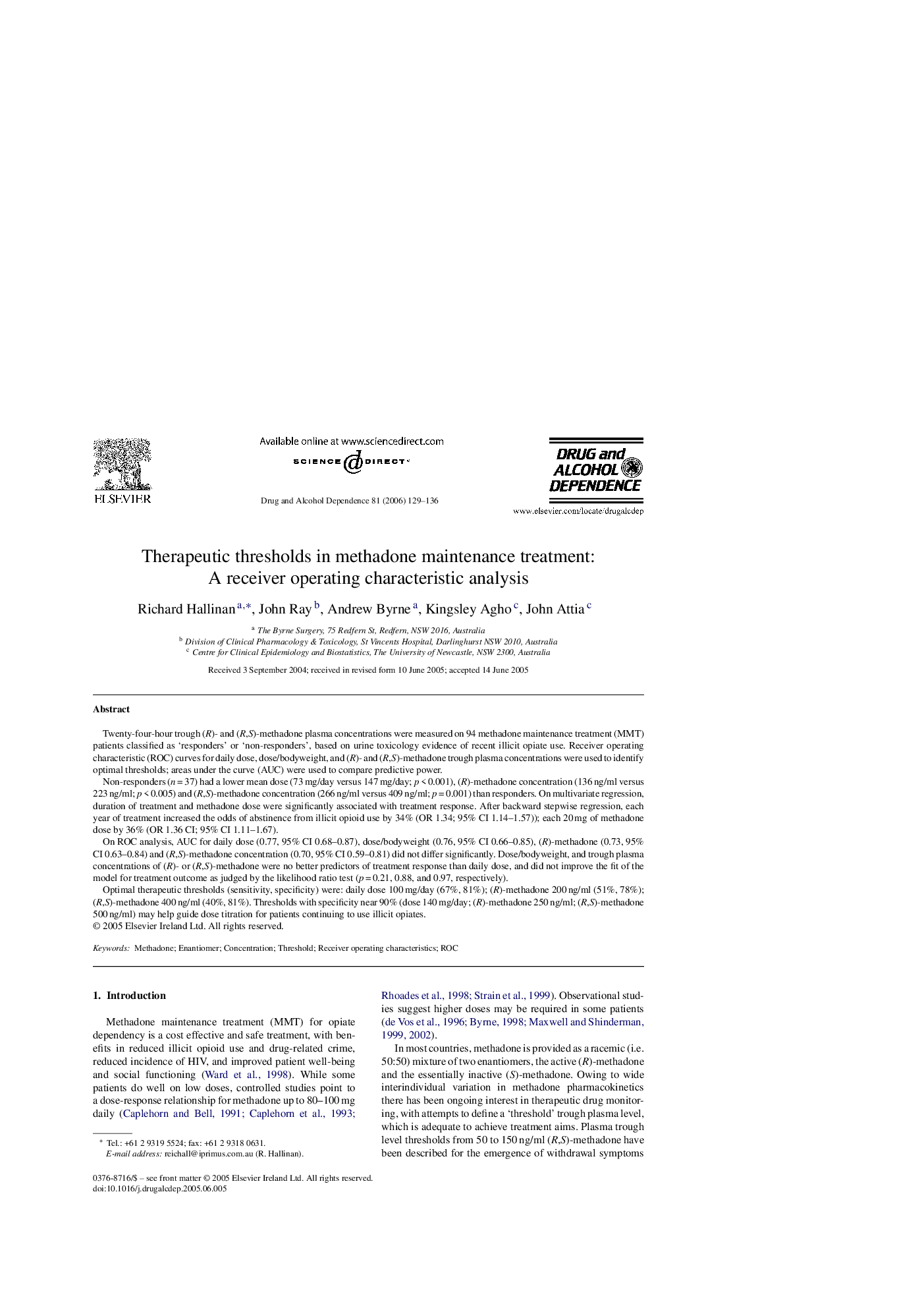| Article ID | Journal | Published Year | Pages | File Type |
|---|---|---|---|---|
| 1071899 | Drug and Alcohol Dependence | 2006 | 8 Pages |
Twenty-four-hour trough (R)- and (R,S)-methadone plasma concentrations were measured on 94 methadone maintenance treatment (MMT) patients classified as ‘responders’ or ‘non-responders’, based on urine toxicology evidence of recent illicit opiate use. Receiver operating characteristic (ROC) curves for daily dose, dose/bodyweight, and (R)- and (R,S)-methadone trough plasma concentrations were used to identify optimal thresholds; areas under the curve (AUC) were used to compare predictive power.Non-responders (n = 37) had a lower mean dose (73 mg/day versus 147 mg/day; p < 0.001), (R)-methadone concentration (136 ng/ml versus 223 ng/ml; p < 0.005) and (R,S)-methadone concentration (266 ng/ml versus 409 ng/ml; p = 0.001) than responders. On multivariate regression, duration of treatment and methadone dose were significantly associated with treatment response. After backward stepwise regression, each year of treatment increased the odds of abstinence from illicit opioid use by 34% (OR 1.34; 95% CI 1.14–1.57)); each 20 mg of methadone dose by 36% (OR 1.36 CI; 95% CI 1.11–1.67).On ROC analysis, AUC for daily dose (0.77, 95% CI 0.68–0.87), dose/bodyweight (0.76, 95% CI 0.66–0.85), (R)-methadone (0.73, 95% CI 0.63–0.84) and (R,S)-methadone concentration (0.70, 95% CI 0.59–0.81) did not differ significantly. Dose/bodyweight, and trough plasma concentrations of (R)- or (R,S)-methadone were no better predictors of treatment response than daily dose, and did not improve the fit of the model for treatment outcome as judged by the likelihood ratio test (p = 0.21, 0.88, and 0.97, respectively).Optimal therapeutic thresholds (sensitivity, specificity) were: daily dose 100 mg/day (67%, 81%); (R)-methadone 200 ng/ml (51%, 78%); (R,S)-methadone 400 ng/ml (40%, 81%). Thresholds with specificity near 90% (dose 140 mg/day; (R)-methadone 250 ng/ml; (R,S)-methadone 500 ng/ml) may help guide dose titration for patients continuing to use illicit opiates.
